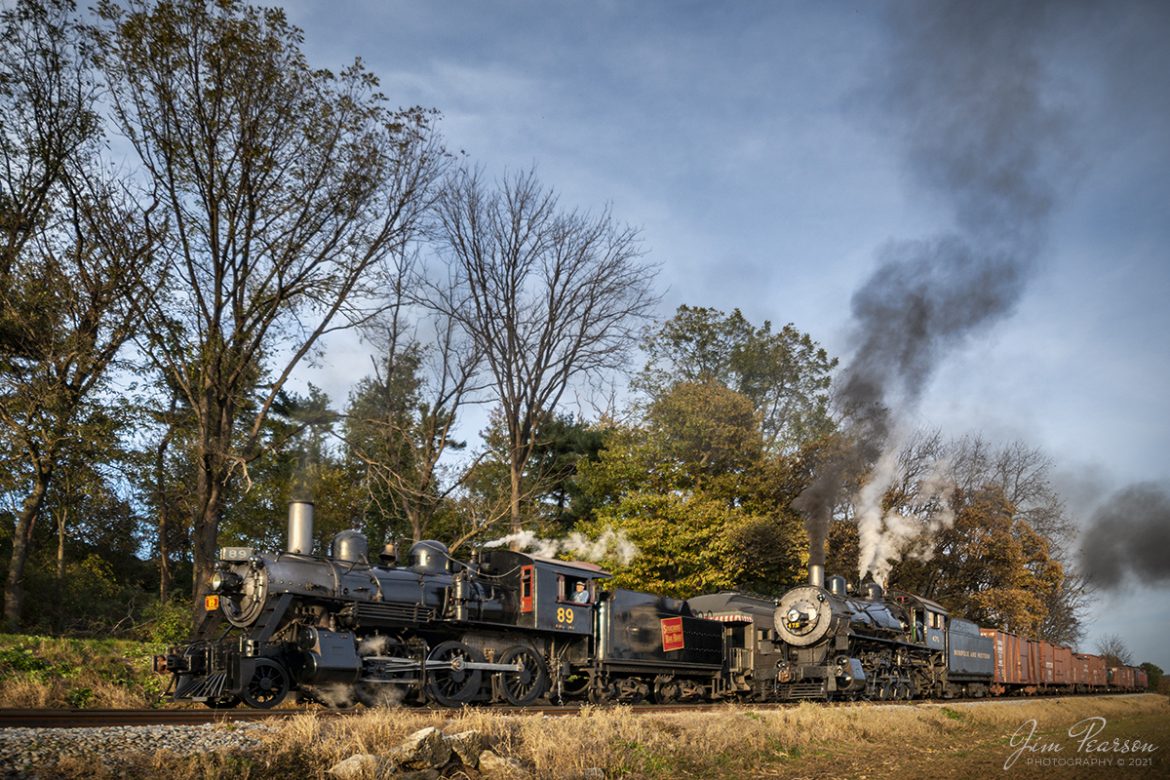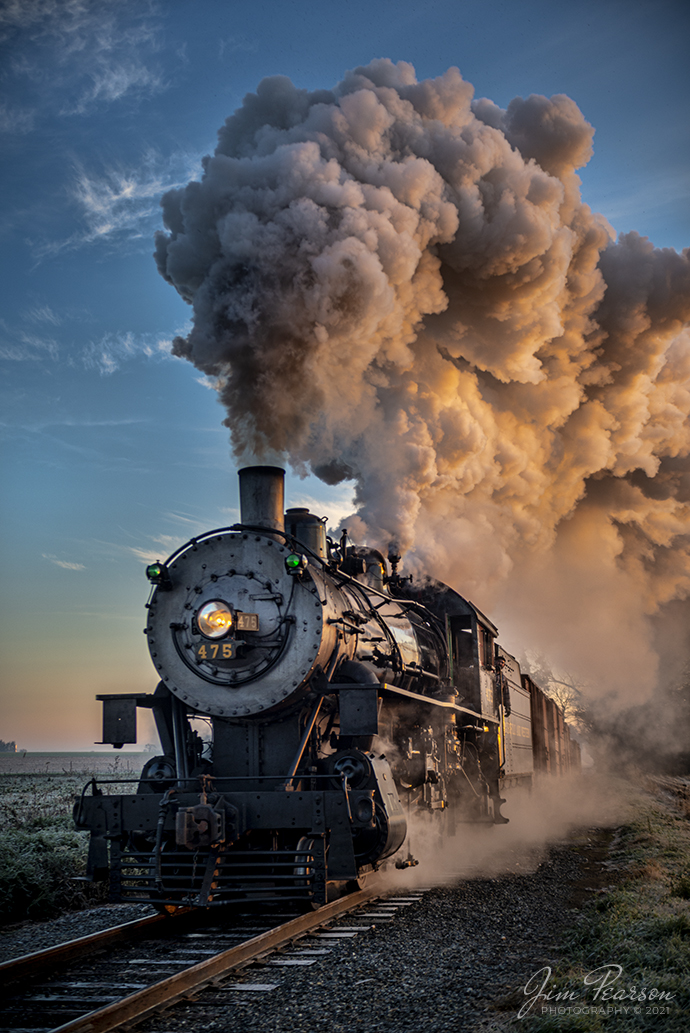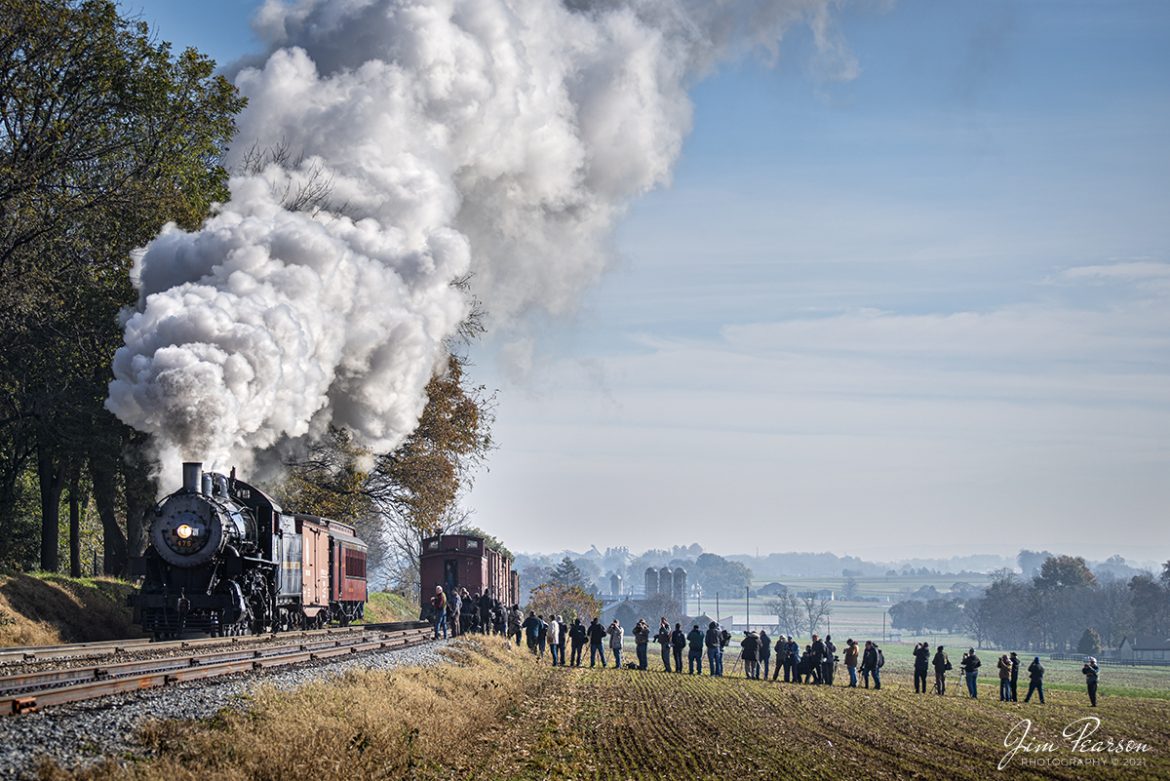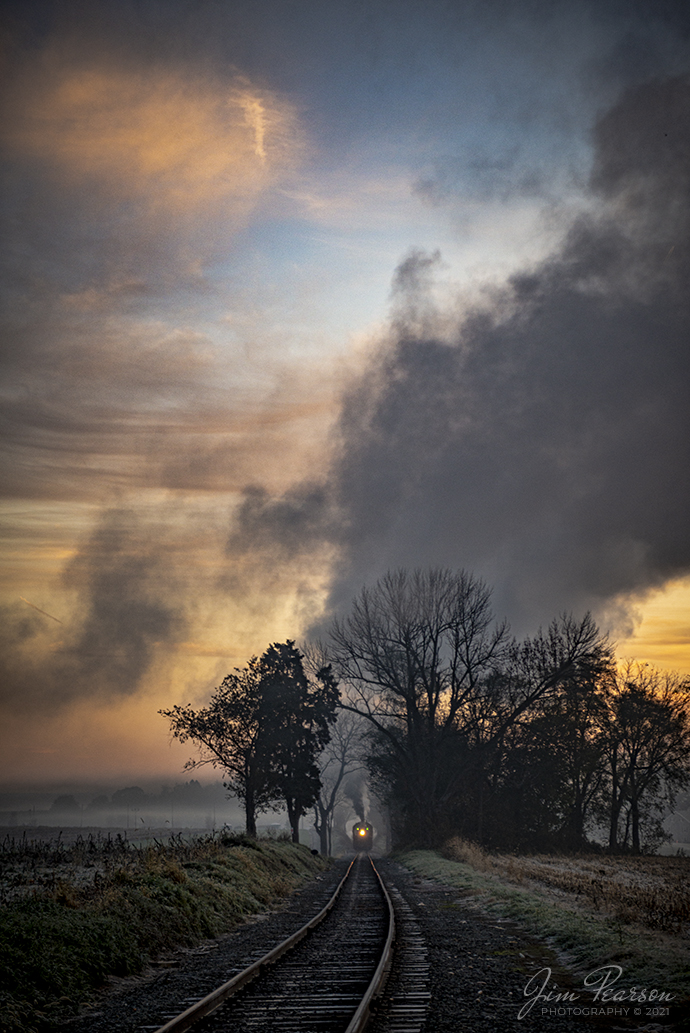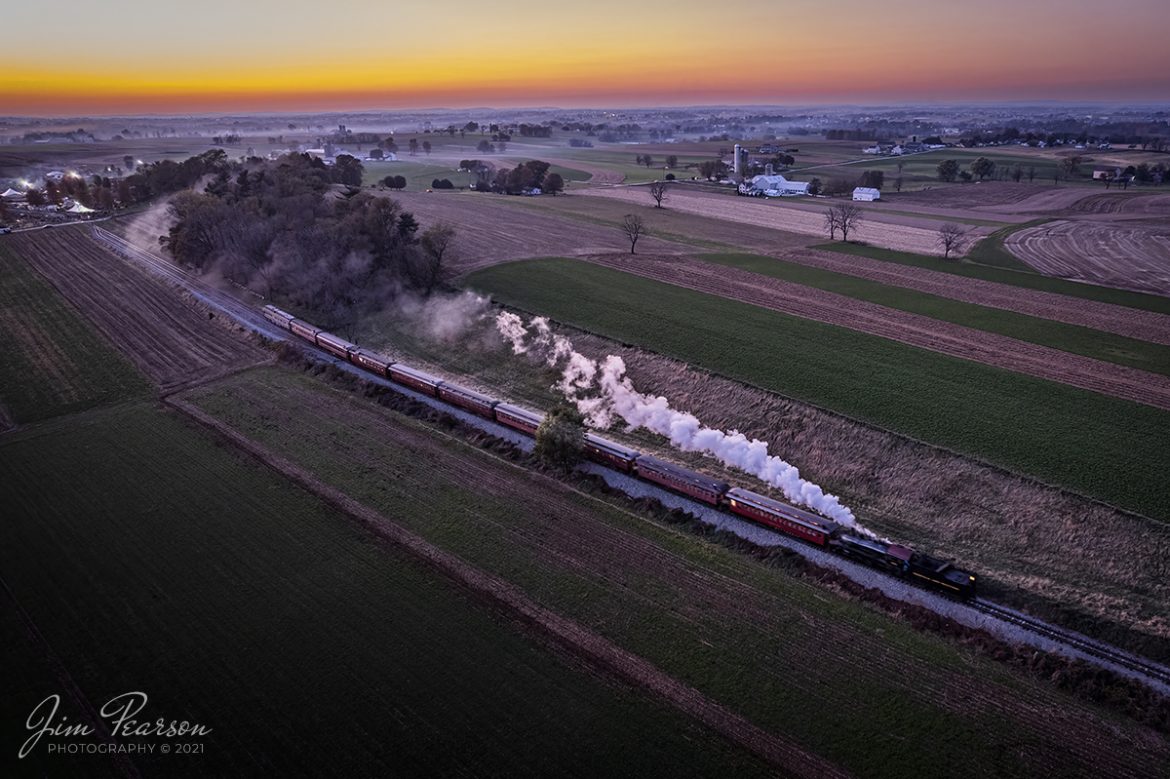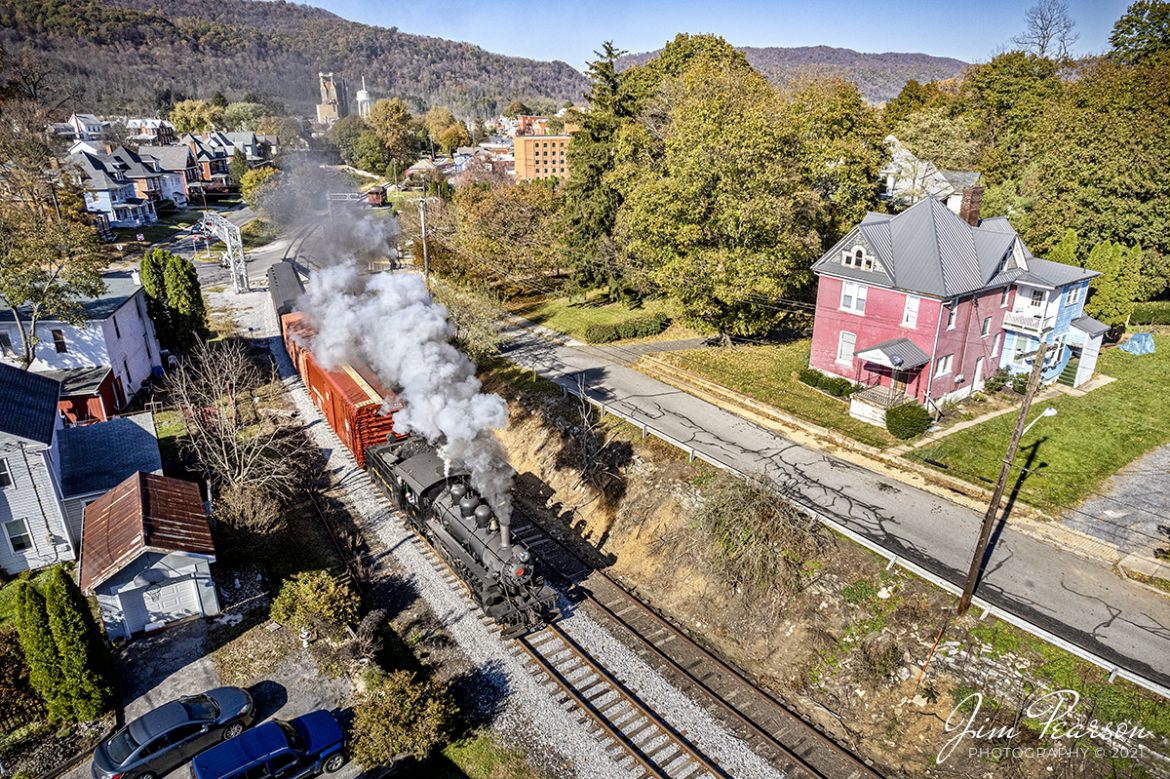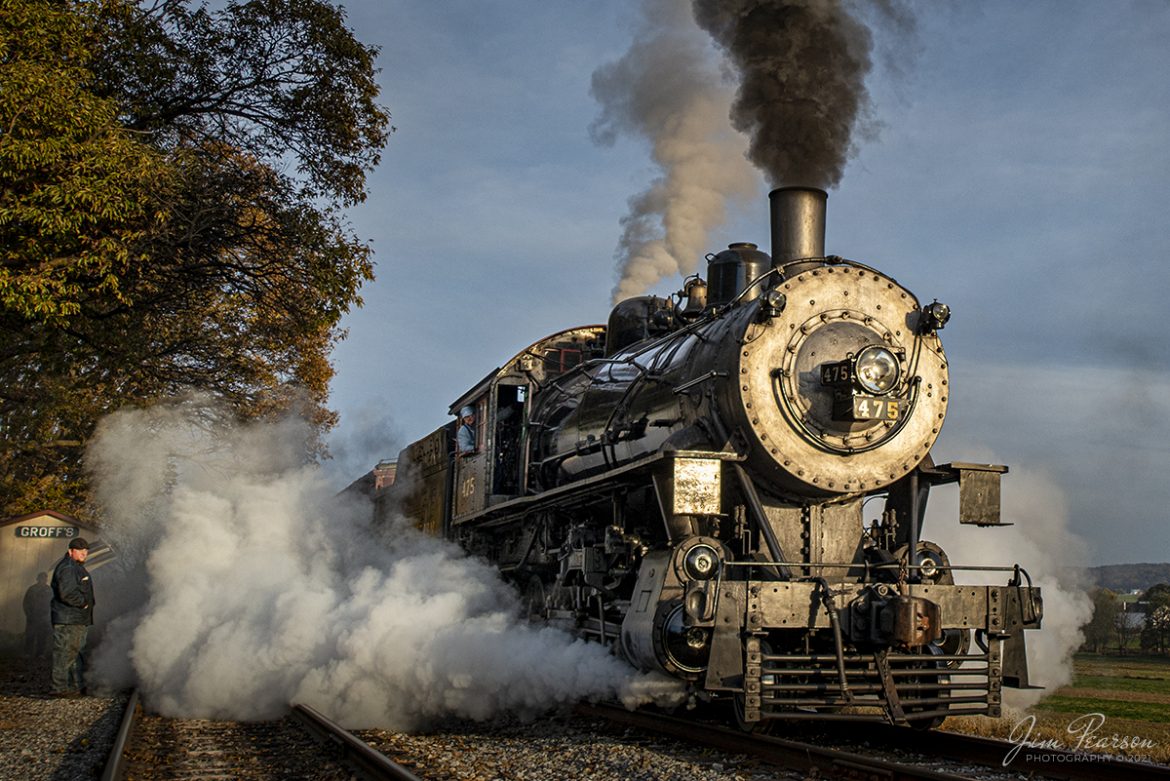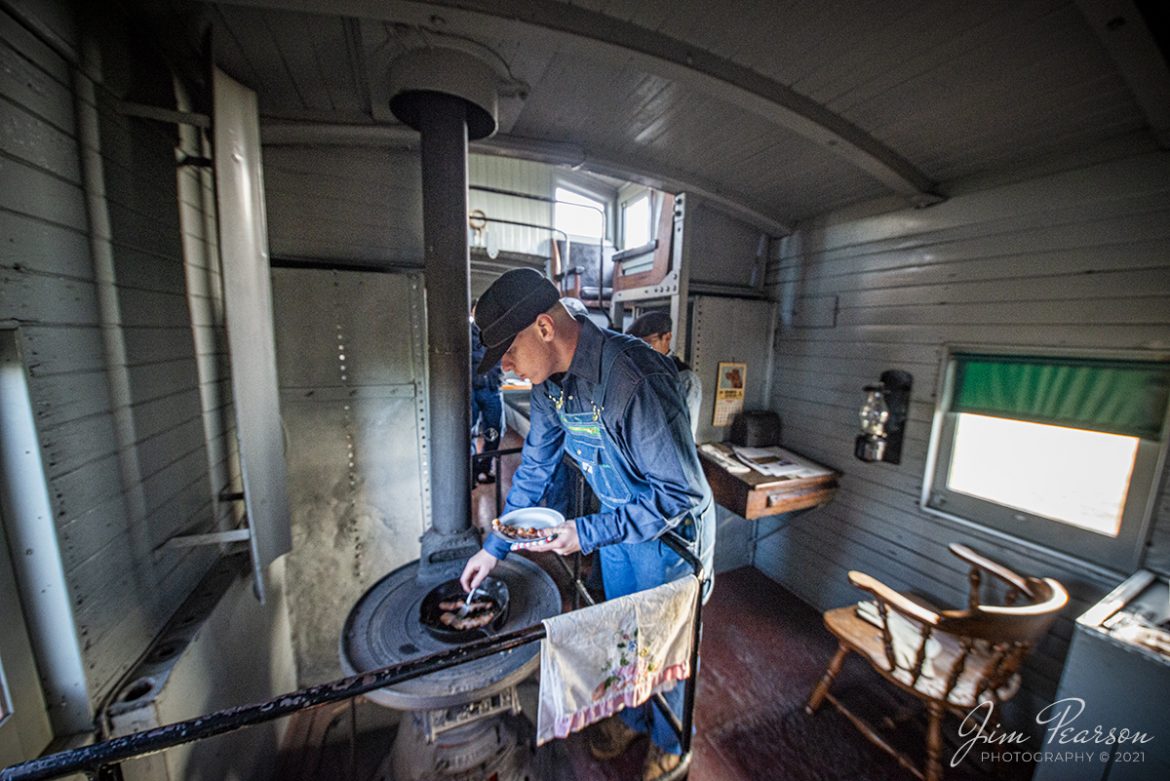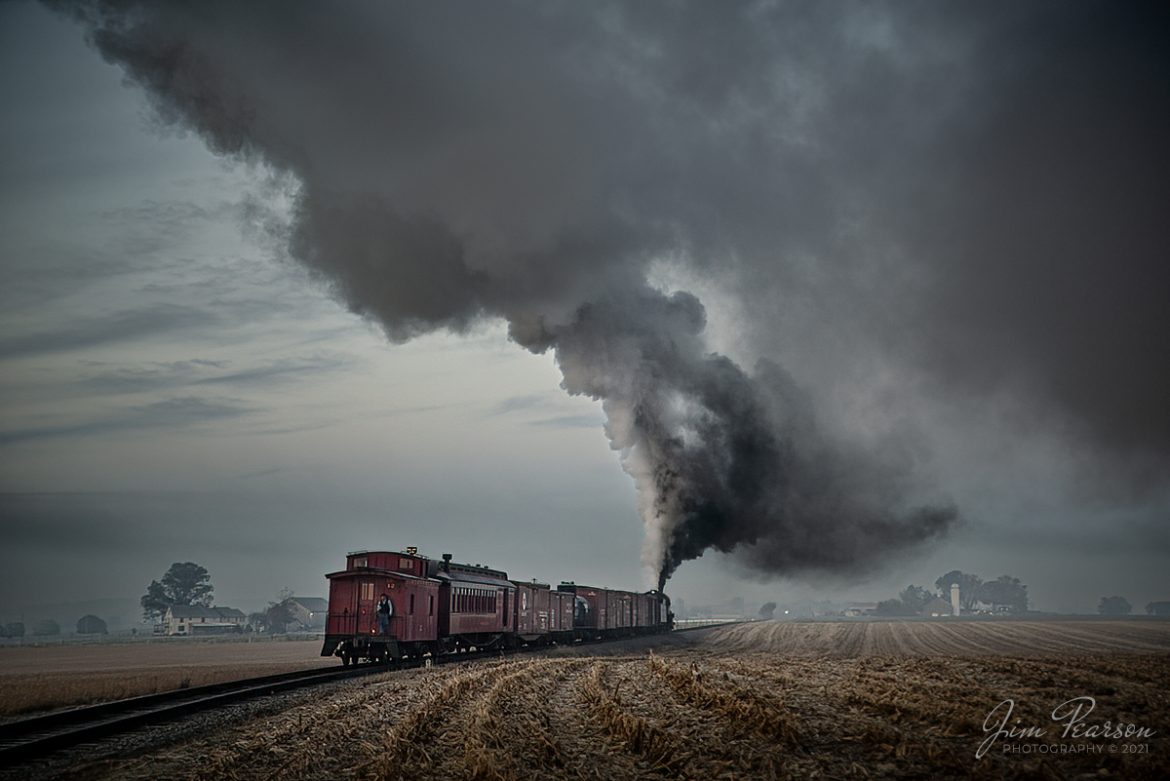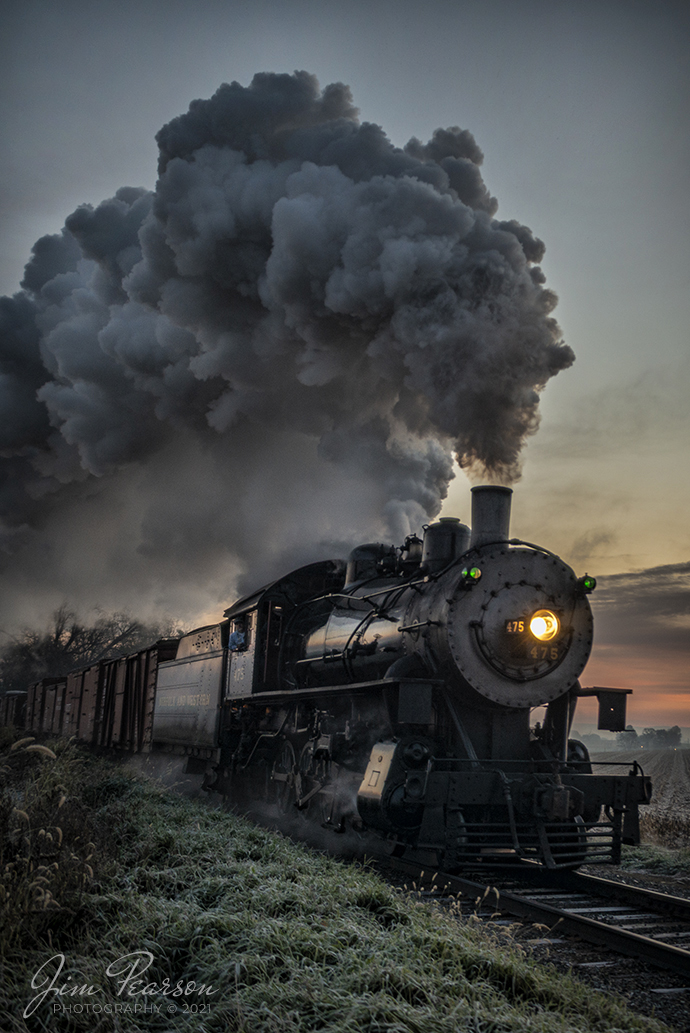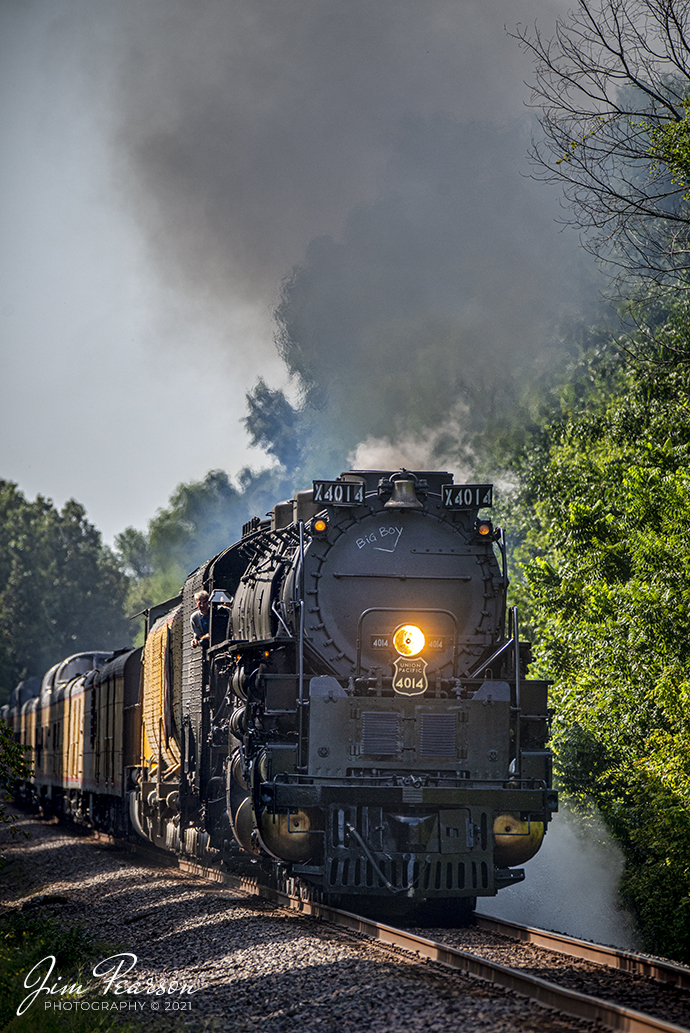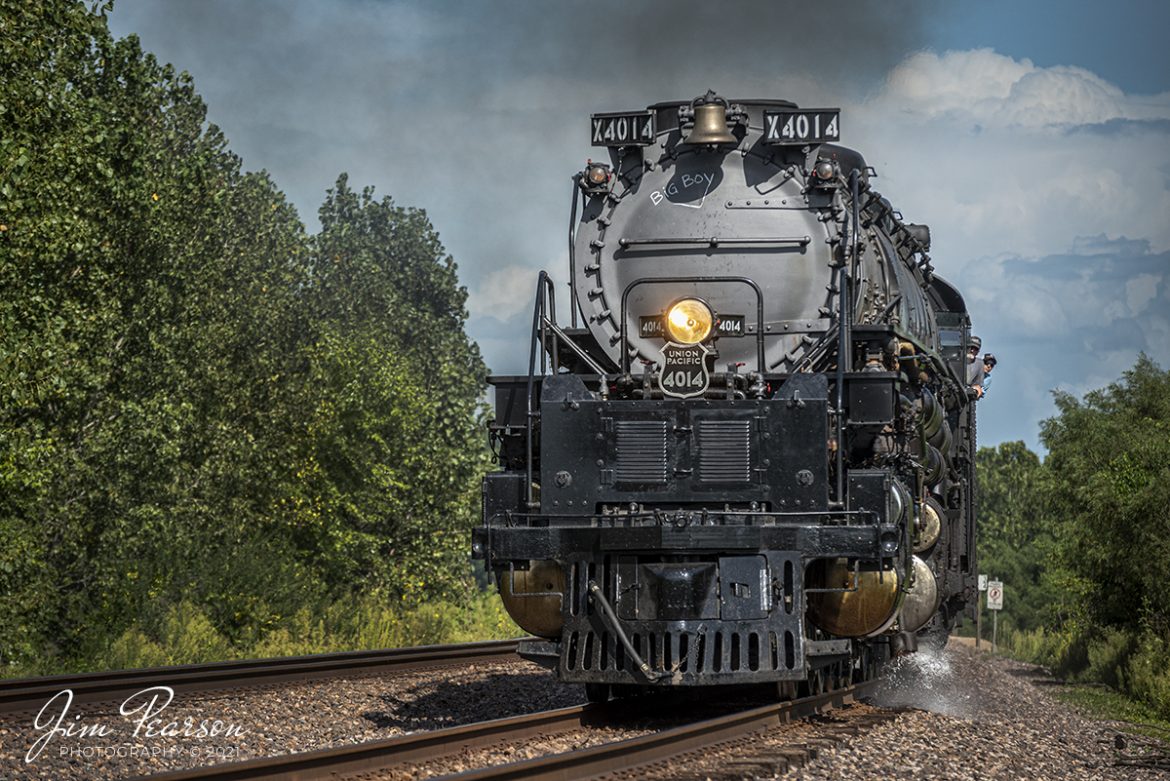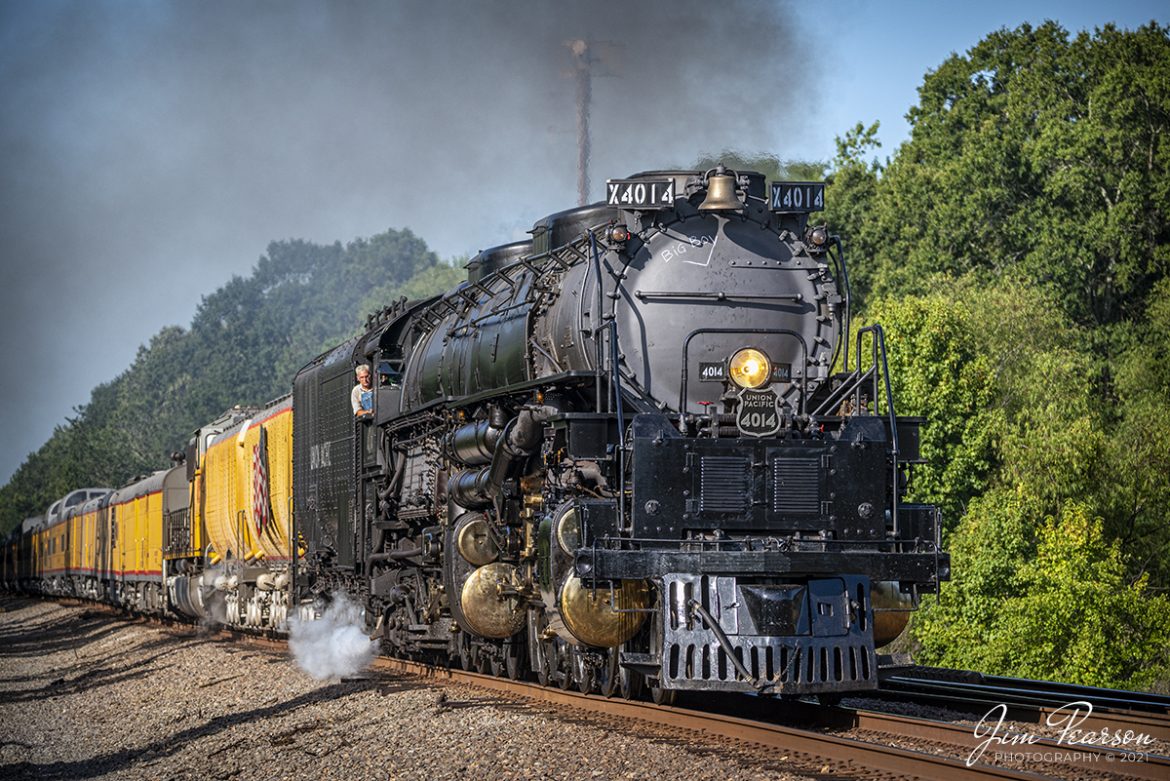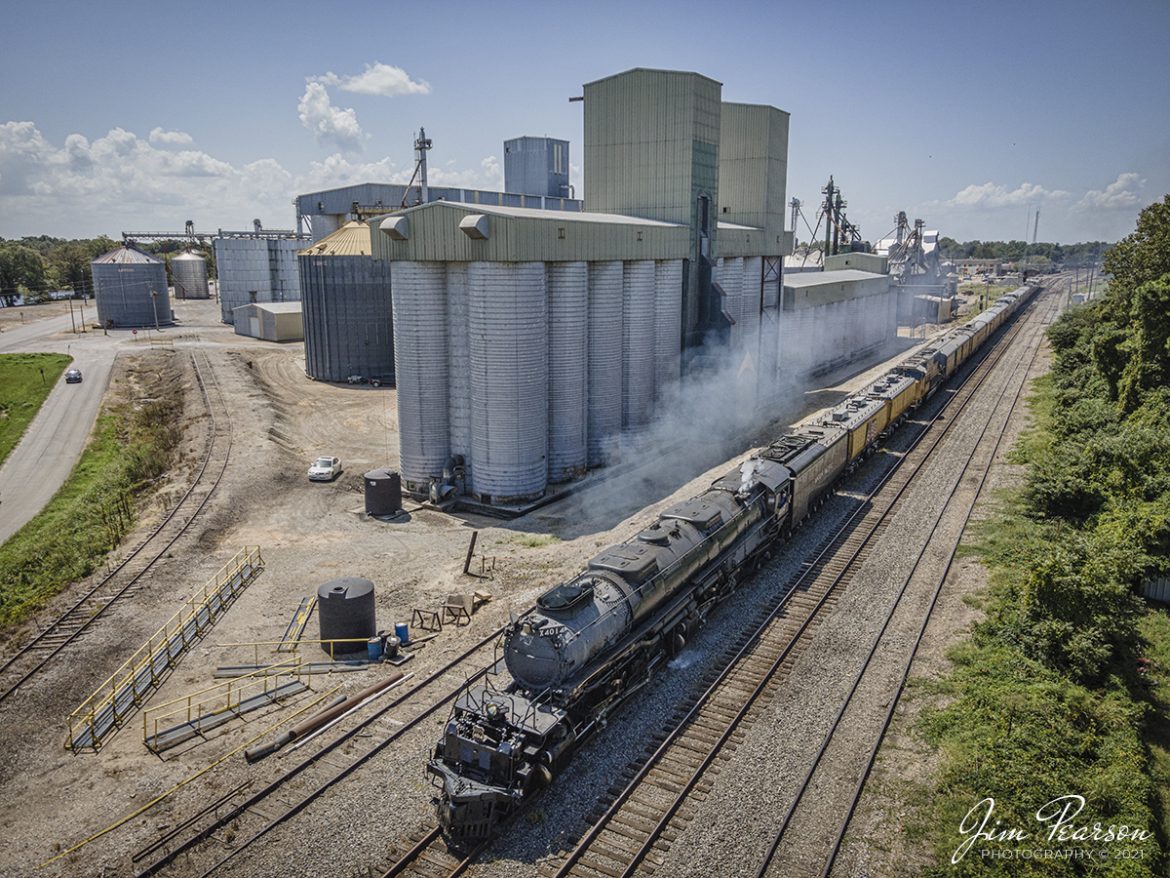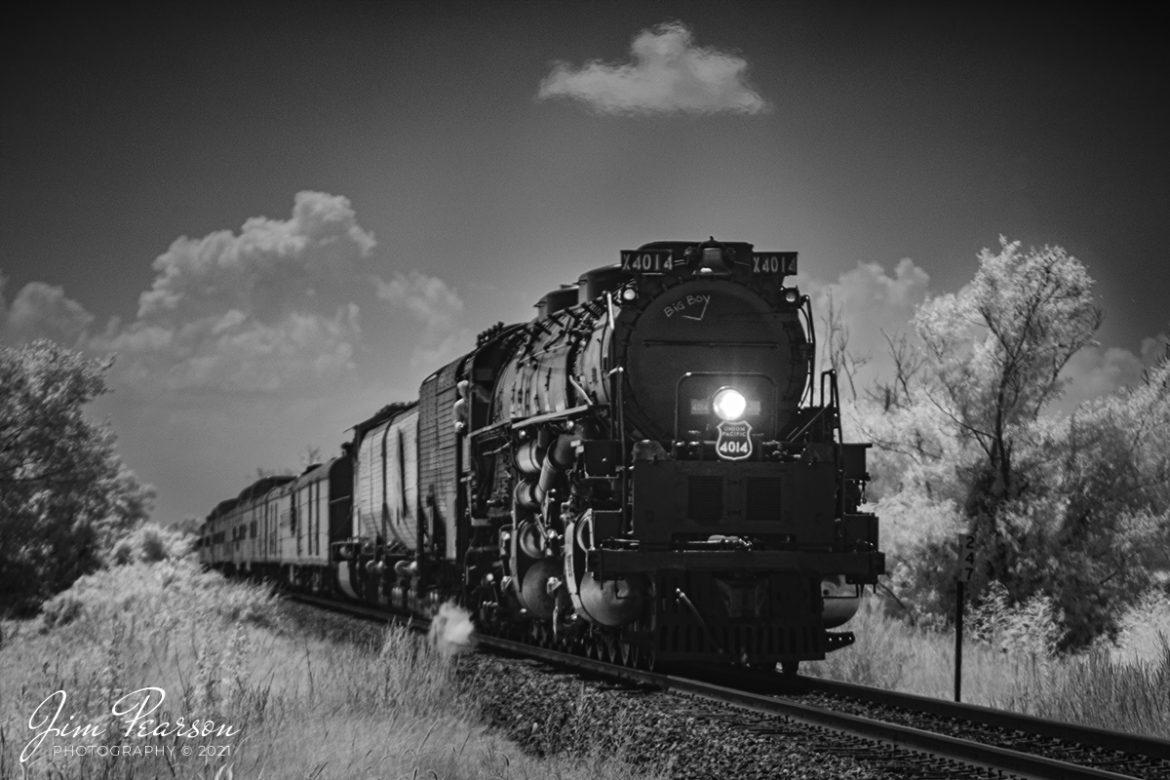Norfolk and Western 475 waits in the siding at Groff’s as Canadian National #89 passes on their way west on the Strasburg Railroad, with a loaded passenger train on November 7th, 2021, at Paradise Township, Pennsylvania.
According to Wikipedia: Strasburg Railroad (Norfolk and Western) No. 475 is a 4-8-0 “Mastodon” type steam locomotive owned and operated by the Strasburg Railroad outside of Strasburg, Pennsylvania. Built by the Baldwin Locomotive Works in June 1906, it was part of the Norfolk and Western’s first order of M class numbered 375-499. Today, No. 475 is the only operating 4-8-0 type in North America and the Strasburg Rail Road’s oldest operating steam locomotive.
Strasburg Railroad (Canadian National) No. 89 is a 2-6-0 “Mogul” type steam locomotive originally built by the Canadian Locomotive Company in February 1910 for the Canadian National Railway. It is now owned and operated by the Strasburg Railroad outside of Strasburg, Pennsylvania where it resides today for use on excursion trains.
Tech Info: Nikon D800, RAW, Nikon 10-20mm @ 14mm, f/4, 1/800, ISO 280.

